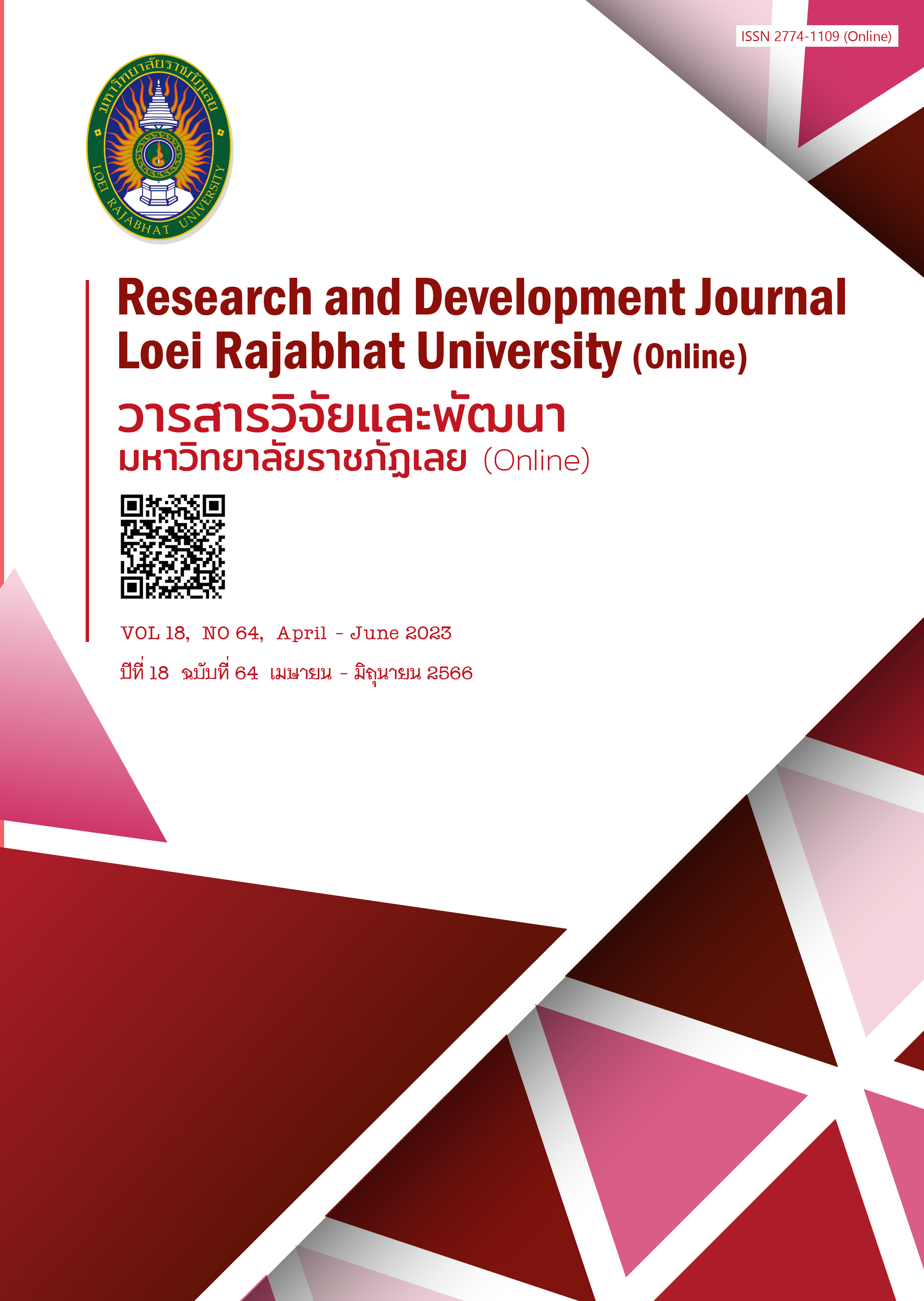Guidelines of Tourism Promotion for Russian Tourists in Koh Samui, Suratthani Province
Keywords:
the guidelines to promote tourism, Russian tourists, Koh SamuiAbstract
The purposes of the research were to 1) study the behaviors of Russian tourists in Koh Samui, Suratthani Province, 2) evaluate the marketing mix affecting the decision to travel to Koh Samui, Suratthani Province, 3) study tourism promotion from stakeholders in Koh Samui, Suratthani Province, and 4) propose guidelines of Tourism Promotion for Russian Tourists in Koh Samui, Suratthani Province.
The results showed that most Russian Tourist are male between 23 – 28 of age, being considered Gen Y of Millennials. Most are entrepreneurs or business owners with a monthly income of 50,000 – 59,999 rubles. Most have an educational level higher than a bachelor’s degree and are single. In terms of the behaviors, travel for leisure purposes, aiming to travel on their day-offs. Most stay in a hotel and have planned their trip by receiving travel information from friends or family. Most spend time traveling for 8 – 14 days. The significant landmark was Chaweng Beach, spend 1 – 3 months planning their trip which was their personal trip with family or relatives. Most spend 60,001 – 80,000 rubles. The activity of interest was nature sightseeing. After the trip concluded, the trip is shared and reviewed by word of mouth and will visit Koh Samui again. The results regarding marketing mix affecting the decision to travel showed that Russian tourists show high opinion toward marketing mix with the most opinion in term of Place.
The results regarding marketing mix affecting the decision to travel showed that Russian tourists show high opinion toward marketing mix with the most opinion in term of Place. The study result regarding tourism promotion from stakeholders in Koh Samui, Suratthani Province led to 1) plan and tourism promotion by advertising tourism products and Russian language training to service providers, 2) Tourism promoting activities are health-related tourism activities, nature tourism activities, and Thai and local gastronomy activities, 3) Images promoting tourism are images of natural scenery and food, and 4) Limitation or obstacles in promoting tourism are Russian language, road condition, and logistics in Koh Samui.
The results of propose of guidelines of tourism promotion for Russian tourists in Koh Samui, Suratthani Province showed that 1) guidelines for the development of logistics network in Koh Samui and access to Koh Samui, 2) guidelines for marketing and public relation for tourism, 3) guidelines for increasing Russian proficiency for tourism personnel.
References
กนกพร สีดอกไม้. (2558). นโยบายการจัดการท่องเที่ยวที่ยั่งยืนของการท่องเที่ยวแห่งประเทศไทย กรณีศึกษาเกาะสมุย. วารสารเซนต์จอห์น, 19(24), 1-15. สืบค้นจาก https://sju.ac.th/web_news/detail/29
กระทรวงการท่องเที่ยวและกีฬา. (2554). แผนพัฒนาการท่องเที่ยวแหล่งชาติ พ.ศ. 2555 – 2559. สืบค้นจาก https://www.businesseventsthailand.com/uploads/press_media/file/190903-file-nXITRgtaP.pdf
กระทรวงการท่องเที่ยวและกีฬา. (2562). สถิตินักท่องเที่ยวภายในประเทศ ปี 2562 (จำแนกตามภูมิภาคและจังหวัด). สืบค้นจาก https://www.mots.go.th/news/category/618
กองเศรษฐกิจการท่องเที่ยวและกีฬา, สำนักงานปลัดกระทรวงการท่องเที่ยวและกีฬา. (2562). รายงานศึกษาขีดความสามารถในการแข่งขันทางเศรษฐกิจการท่องเที่ยวทางทะเลและชายหาด Sea Sun Sand Tourism Economics Competitiveness). สืบค้นจาก https://secretary.mots.go.th/ewtadmin/ewt/policy/download/article/article_20190625145933
คณะกรรมการนโยบายการท่องเที่ยวแห่งชาติ, สำนักงานปลัดกระทรวงการท่องเที่ยวและกีฬา. (2563). แผนพัฒนาการท่องเที่ยวแห่งชาติ พ.ศ. 2564–2565. สืบค้นจาก https://nantourism.go.th/filesAttach/news/1640831929.pdf
จิรวุฒิ หลอมประโคน, ศลาฆนันท์ หงส์สวัสดิ์, และ รัชภร รุ่งตั้งธนาบุญ. (2561). ปัจจัยการตลาดและพฤติกรรมของนักท่องเที่ยวที่มาตลาดน้ำทุ่งบัวแดง จังหวัดนครปฐม. วารสารวิจัยรำไพพรรณี, 13(2), 73-82. สืบค้นจาก https://so05.tci-thaijo.org/index.php/RRBR/article/view/208168
นภาวดี พยัคฆโส. (2554). พฤติกรรมและทัศนคติของนักท่องเที่ยว ชาวรัสเซียที่มีต่อการเดินทางมาท่องเที่ยวประเทศไทย (วิทยานิพนธ์ปริญญามหาบัณฑิต). จุฬาลงกรณ์มหาวิทยาลัย, กรุงเทพฯ.
เพ็ญนภา เพ็งประไพ. (2559). ปัจจัยส่วนประสมทางการตลาด ที่มีอิทธิพลต่อความต้องการของนักท่องเที่ยว ชาวไทยและชาวต่างชาติในกิจกรรมการท่องเที่ยวเชิงสังคมและวัฒนธรรมของเกาะพะงัน จังหวัดสุราษฎร์ธานี (วิทยานิพนธ์ปริญญามหาบัณฑิต). มหาวิทยาลัยกรุงเทพ, ปทุมธานี.
ยิ่งศักดิ์ จงเลิศเจษฎาวงศ์, และ อำไพ บูรณกิตติภิญโญ. (2560). การศึกษาพฤติกรรมและปัจจัยที่มีผลต่อการท่องเที่ยวของนักท่องเที่ยวชาวรัสเซีย. วารสารวิทยาลัยเทคโนโลยีสยาม, 6(1), 171-183. สืบค้นจาก https://so01.tci-thaijo.org/index.php/bkkthon/article/view/
ศูนย์วิจัยกสิกรไทย. (2559, 16 พฤษภาคม). กระชับความสัมพันธ์ไทย-รัสเซีย: ผลดีต่อการท่องเที่ยวไทย...คาดปี 2559 นักท่องเที่ยวรัสเซียจะกลับมาแตะล้านคน. กระแสทัศน์. สืบค้นจาก https://www.kasikornresearch.com/th/analysis/k-econ/business/Pages/35293.aspx
เอกธนา พลเชียงขวาง และ เทิดชาย ช่วยบำรุง. (2558). แนวทางการพัฒนาแหล่งท่องเที่ยวอัญมณีของจังหวัดจันทบุรี เพื่อตอบสนองพฤติกรรมนักท่องเที่ยวชาวไทย. วารสารดุษฎีบัณฑิตทางสังคมศาสตร์, 5(1), 115-127. สืบค้นจาก https://so05.tci-thaijo.org/index.php/phdssj/article/view/68703
Yamane, T. (1973). Statistics: An Introductory Analysis (3rd Ed). New York: Harper and Row Publications.
Downloads
Published
How to Cite
Issue
Section
License
Copyright (c) 2023 Research and Development Journal, Loei Rajabhat University

This work is licensed under a Creative Commons Attribution-NonCommercial-NoDerivatives 4.0 International License.
ข้อความที่ปรากฎในวารสารฉบับนี้เป็นความคิดเห็นของผู้เขียนแต่ละท่าน สถาบันวิจัยและพัฒนา มหาวิทยาลัยราชภัฏเลย และกองบรรณาธิการ ไม่จำเป็นต้องเห็นด้วยและไม่มีส่วนรับผิดชอบใดๆ
สถาบันวิจัยและพัฒนา มหาวิทยาลัยราชภัฏเลย ขอให้ผู้อ่านอ้างอิงในกรณีที่ท่านคัดลอกเนื้อหาบทความในวารสารฉบับนี้






